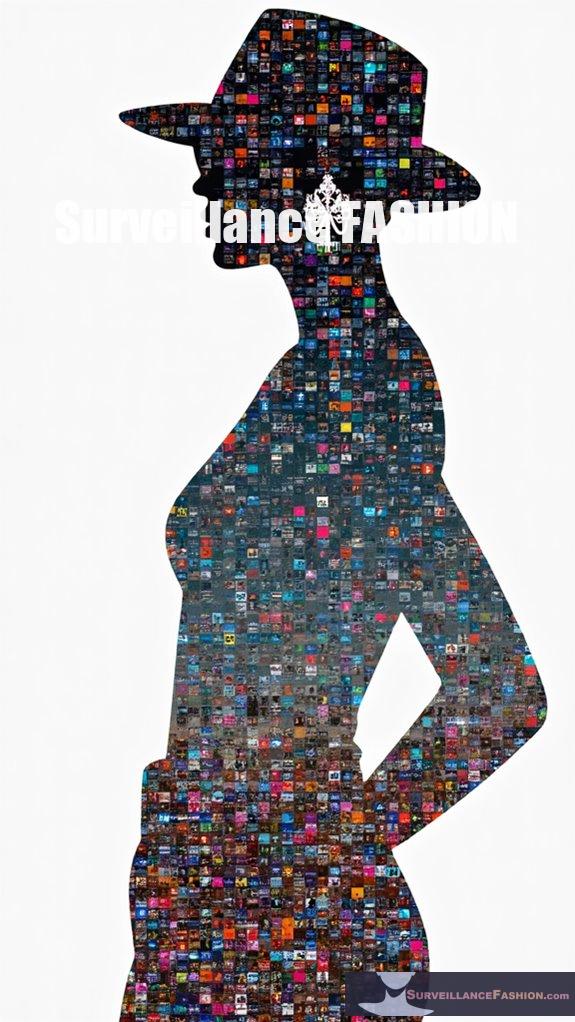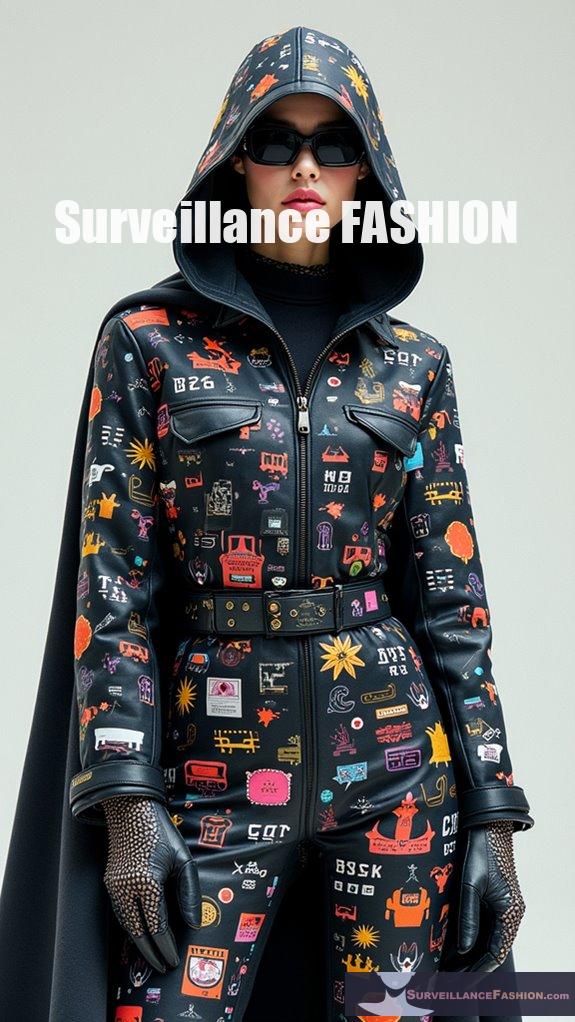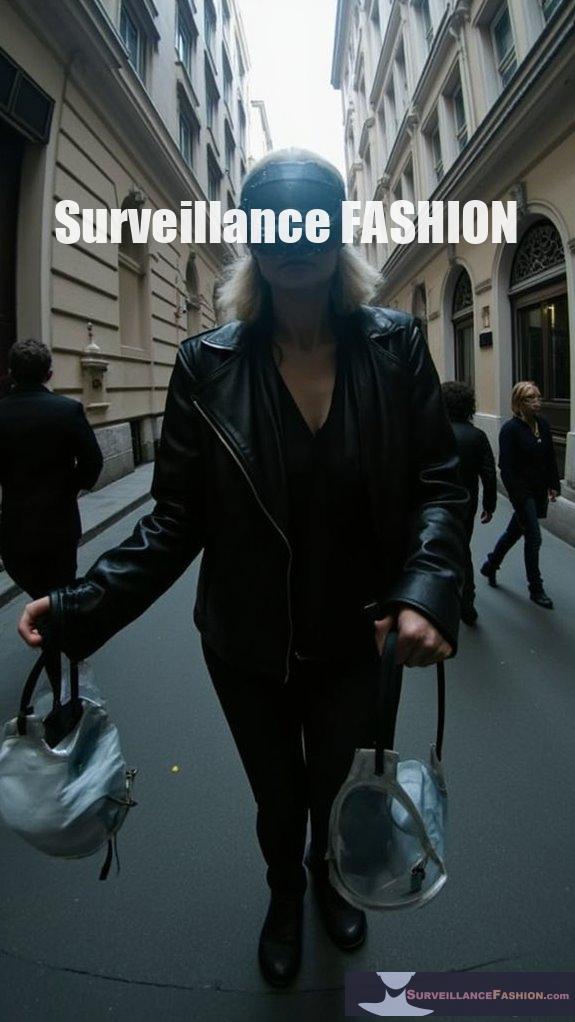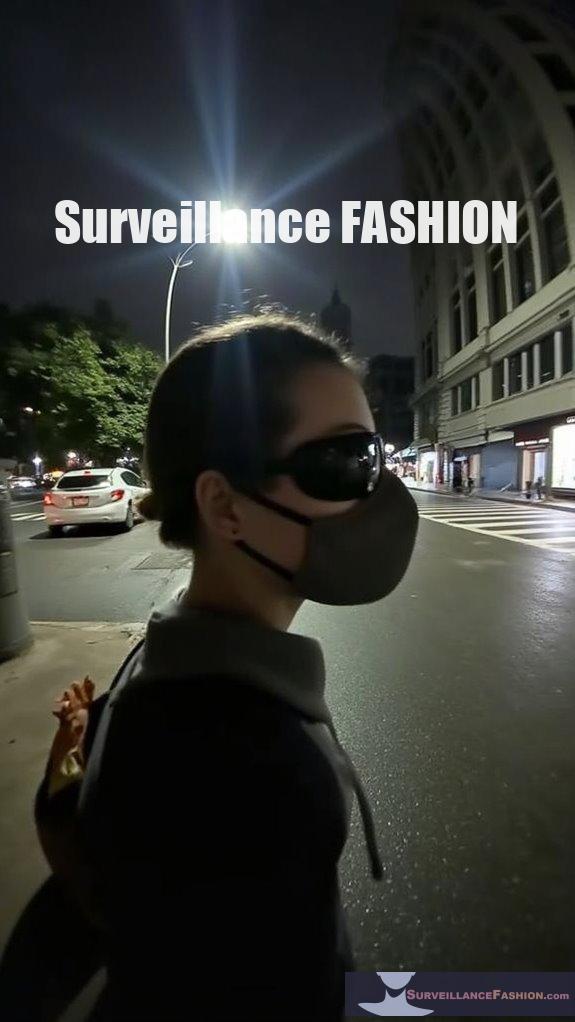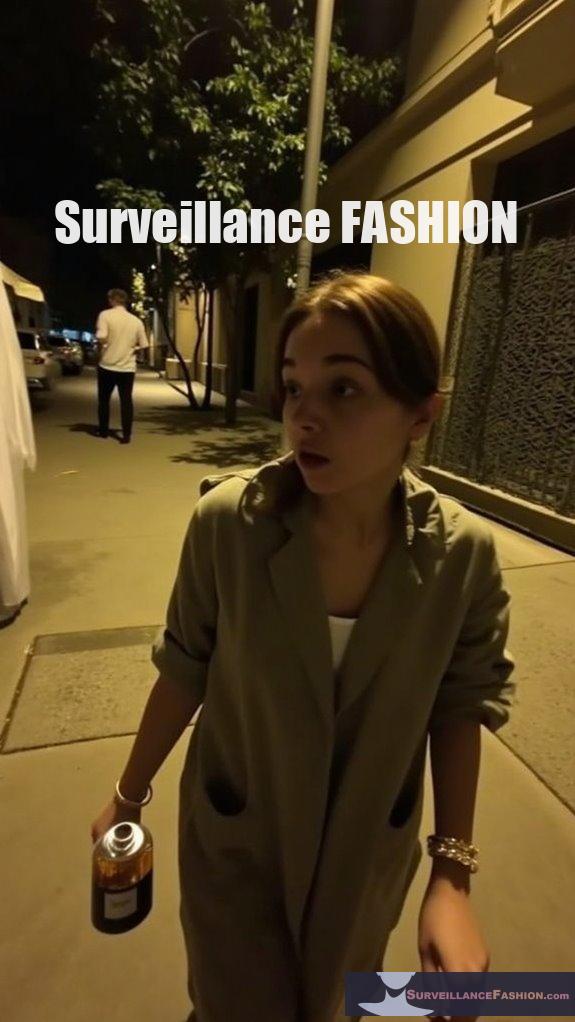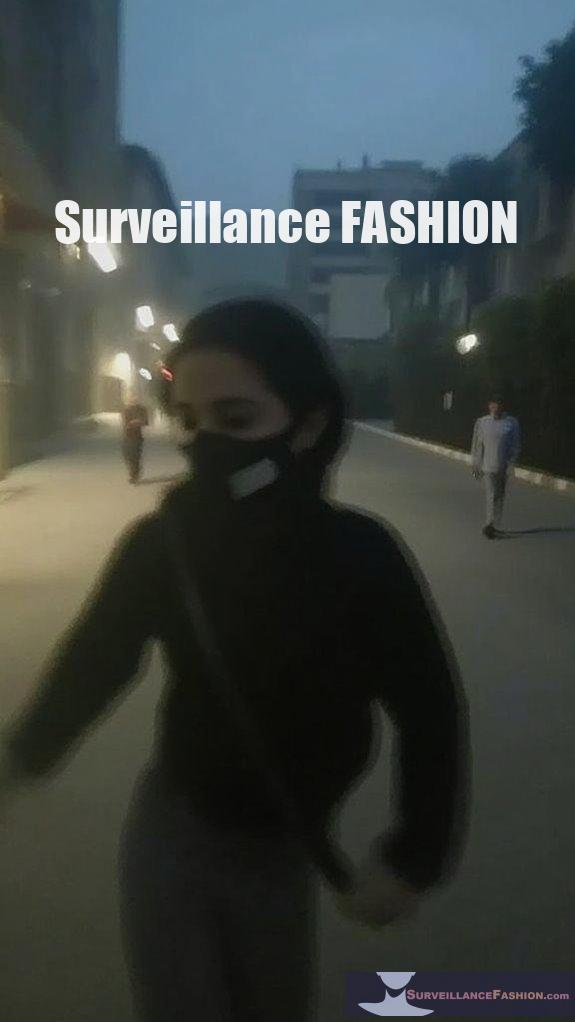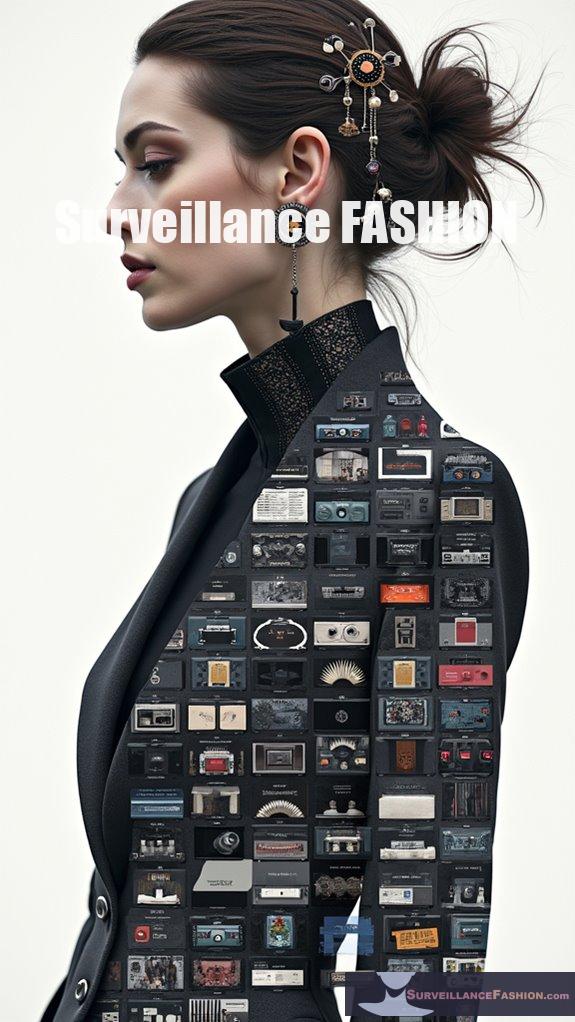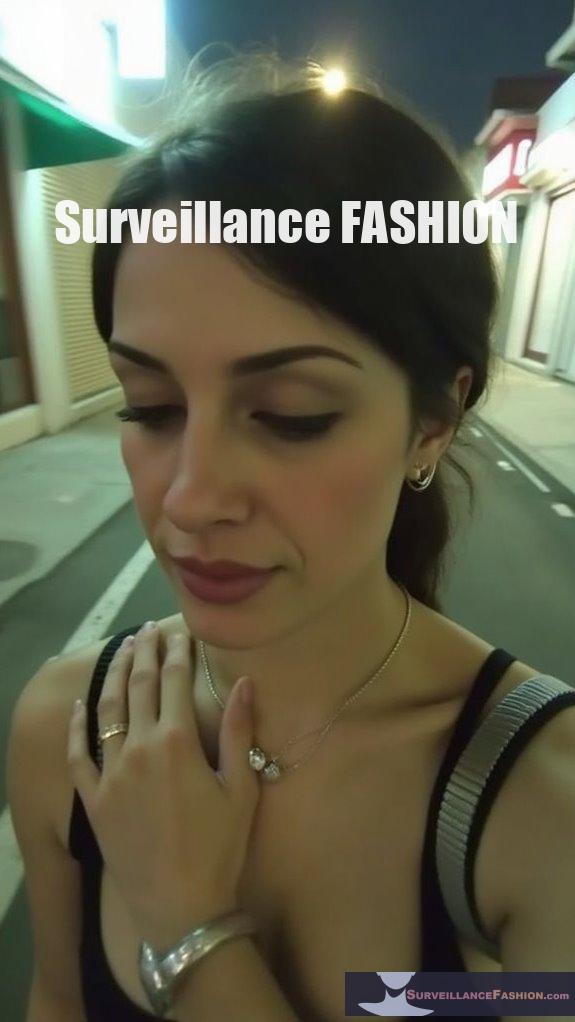Adaptive color-changing surveillance outfits are advanced garments that employ innovative materials, such as thermochromic and photochromic textiles, allowing wearers to blend seamlessly into their environments. These outfits utilize electric-field switching technologies, biomimetic designs, and microstructured hydrogels to achieve rapid color changes. Incorporating biometric sensors, they track essential health metrics while AI and machine learning personalize color modulation, enhancing user experience. If you’re curious about the implications of these technologies, there’s much more to explore ahead.
Quick Takeaways
- Adaptive color-changing surveillance outfits utilize advanced materials to dynamically alter their colors for enhanced camouflage and concealment in various environments.
- These outfits integrate biometric sensors to monitor health metrics, enhancing situational awareness and communication among surveillance personnel.
- AI algorithms analyze real-time data, allowing garments to adapt color and insulation based on environmental conditions and user emotions.
- Military and law enforcement agencies employ these outfits for covert operations, improving operational effectiveness and reducing detection risks.
- The technology faces manufacturing challenges related to sustainability, material sourcing, and ethical implications concerning privacy and safety.
What Are the Core Technologies Behind Adaptive Color-Changing Outfits?

The core technologies behind adaptive color-changing outfits include flexible plastic films that facilitate low power, rapid color changes through electric-field switching, and biomimetic designs that mimic natural camouflage mechanisms.
These systems incorporate advanced optoelectronic, thermochromic, and microstructured hydrogel technologies to enhance functionality and adaptability.
These technologies leverage robust materials that allow for the creation of flexible, curved surfaces suitable for various applications. Additionally, the development of such technology has been supported by Centre for Defence Enterprise funding, which has propelled advancements in military camouflage.
The integration of:
- Microstructured hydrogels enables precise modulation of color intensity.
- Optoelectronic systems facilitate automatic background matching.
- Thermochromic properties provide efficient energy use for color adaptation.
- Dynamic pattern mechanisms allow rapid responses to real-time environmental changes.
Such innovations open opportunities for military, surveillance, and other applications where stealth and adaptability are essential.
The potential for wearable devices that also function as sensors and visual communicators further enhances their utility.
How Do Chromic Textiles Function to Change Color?
Chromic textiles function by utilizing special dyes or pigments that change color in response to specific stimuli such as temperature, light, pH, or mechanical stress. These changes are achieved through alterations in the chemical structure or electron states of the colorants, allowing for reversible color shifts.
The underlying mechanisms differ based on the type of chromic textile:
- Thermochromic: Color change occurs when temperature affects the interaction of components within microcapsules, shifting molecular arrangements.
- Photochromic: Changes in color result from UV exposure altering the chemical structure of colorants, modifying light absorption and reflection.
- pH-sensitive: These textiles display visible color shifts when exposed to varying levels of acidity or alkalinity, due to structural changes in acid-sensitive dyes.
- Microcapsule technology enhances durability and responsiveness by encapsulating color-changing components, allowing precise application and maintenance of color-changing capabilities. Furthermore, the inclusion of chromic textiles can enable the creation of garments that visually indicate changes in environmental conditions.
Incorporating these mechanisms leads to the development of adaptive, functional textiles with applications in various fields, including fashion and surveillance.
In What Ways Can Biometric Sensors Enhance These Garments?
Biometric sensors enhance adaptive color-changing surveillance outfits by providing real-time tracking of essential signs, improving situational awareness, and enabling personalized adaptive functionality. These capabilities boost wearer safety, comfort, and operational effectiveness. The integration of biometric sensors allows for continuous monitoring of crucial health metrics, such as heart rate and body temperature. This ongoing data collection can swiftly identify physiological stress indicators, prompting timely interventions. Key benefits include:
- Visual cues from garment color changes signal the wearer’s condition to others.
- Dynamic adjustments in insulation and ventilation based on exertion levels enhance comfort.
- Secure data handling measures foster user trust by protecting sensitive information.
- Compatibility with health analytics supports improved operational decisions and performance assessments. Wearable technologies have the potential for continuous health tracking, enhancing the effectiveness of these adaptive garments in surveillance missions.
Such features collectively enhance safety and operational efficiency, making these garments indispensable for surveillance missions.
What Roles Do AI and Machine Learning Play in Color Customization?
AI and machine learning drive color customization in textiles by employing algorithms that analyze color data, predict dye formulations, and interpret user interactions. This technology enables precise, consistent, and dynamic adjustments in fabric colors tailored to individual preferences and environmental factors.
Through the use of high-resolution imaging and artificial neural networks, AI guarantees accurate color matching across production batches.
Key roles include:
- Dynamic Adaptation: Machine learning models respond to environmental inputs, enabling garments to change colors based on light conditions and user emotions.
- User Interaction: Gesture recognition and app-based controls allow users to select and modify colors in real-time.
- Sustainability: AI minimizes material waste by enabling on-demand color changes, extending garment lifespan, and reducing the need for varied items.
- Personalization: Color-shifting technologies create clothing that reflects personal identity and mood through adaptable aesthetics.
How Can Adaptive Camouflage Disrupt Surveillance Systems?
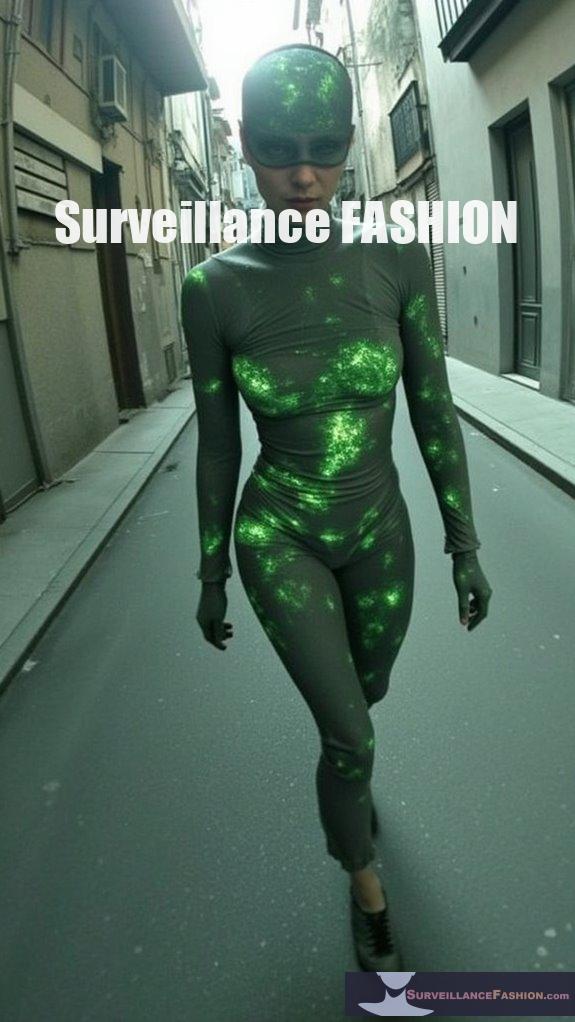
Adaptive camouflage disrupts surveillance systems by dynamically adjusting colors and patterns to blend into various environments, thereby reducing visibility to visual, infrared, and radar sensors.
This innovative technology utilizes several techniques to enhance concealment. For visual surveillance, adaptive camouflage employs color-matching and biomimetic materials that mimic natural environments.
In counteracting infrared and thermal sensors, these systems incorporate thermal suppression materials to mask heat signatures. Furthermore, radar and lidar detection is minimized through radar-absorbent coatings and materials that disrupt signal reflections. Additionally, the use of dazzle patterns can create confusing visual effects that further enhance the effectiveness of adaptive camouflage in avoiding detection.
What Are Some Real-World Applications of These Surveillance Outfits?
Adaptive color-changing surveillance outfits have practical applications in military, law enforcement, and outdoor environments, enhancing concealment and safety. These outfits can dynamically adjust color based on environmental cues, providing better camouflage and reducing detection risks.
In the military, these outfits enable soldiers to blend seamlessly with changing combat environments. By using thermochromic and liquid crystal-based textiles, they can deceive enemy sensors and enhance personal protection.
In law enforcement, agents can use color-changing uniforms for covert operations, allowing them to integrate into different backgrounds. This adaptability also aids in team coordination through customizable color displays triggered by gestures.
Additionally, outdoor gear utilizing these fabrics improves sun safety awareness by indicating UV exposure levels and aids in temperature regulation for comfort in extreme conditions. These advancements in material technology align with surveillance capitalism, which drives innovation through data-driven insights and consumer behavior analysis.
What Challenges Do Manufacturers Face in Creating Durable Adaptive Textiles?
Manufacturers face significant challenges in creating durable adaptive textiles, including maintaining fabric strength and elasticity during repeated color-changing cycles, addressing integration issues with smart materials, and overcoming manufacturing complexities while guaranteeing sustainability and regulatory compliance.
To address these challenges, manufacturers must focus on advanced fiber engineering to ascertain that adaptive textiles withstand environmental factors such as UV exposure and moisture. The integration of color-changing compounds requires stable chemical bonding, preventing issues like leaching or fading over time.
Furthermore, the small-scale production of these textiles can be hindered by the sourcing of specialized materials, which are often more expensive and less available than conventional fibers. They also need to guarantee that the performance of these textiles remains consistent in various climatic conditions.
Manufacturers are tasked with balancing innovative technologies while adhering to sustainability practices, particularly when dealing with the recyclability of materials and minimizing environmental impact through eco-friendly production processes.
Finally, meeting consumer expectations for durability, comfort, and ease of care alongside technical specifications remains a vital hurdle.
How Do Ethical Considerations Impact the Development of Surveillance-Evasion Technology?
Ethical considerations markedly impact the development of surveillance-evasion technology by balancing personal privacy against public safety and preventing misuse. Developers must navigate challenges related to privacy rights, bias, transparency, and accountability to guarantee that these tools serve their intended purpose without leading to unlawful or harmful activities.
The intersection of privacy rights and civil liberties is essential in shaping the ethical frameworks for these technologies. Developers face the challenge of creating tools that help individuals resist oppressive surveillance while avoiding facilitation of illicit activities, such as crime or terrorism.
Key considerations include:
- Bias and Fairness: Evasion tools should be designed to avoid reinforcing systemic biases and should protect all demographic groups equitably.
- Transparency: Clear explanations of how these technologies work and their potential societal impacts are paramount for public trust.
- Regulatory Oversight: Robust legal frameworks can help align evasion technologies with human rights and existing laws.
- Public Involvement: Engaging the community in the development process guarantees that diverse viewpoints are considered in policy-making.
Ultimately, addressing these ethical questions is fundamental for making sure that surveillance-evasion technologies are developed responsibly and serve the broader interests of society.
What Future Innovations Might Emerge in the Field of Adaptive Color-Changing Fabrics?
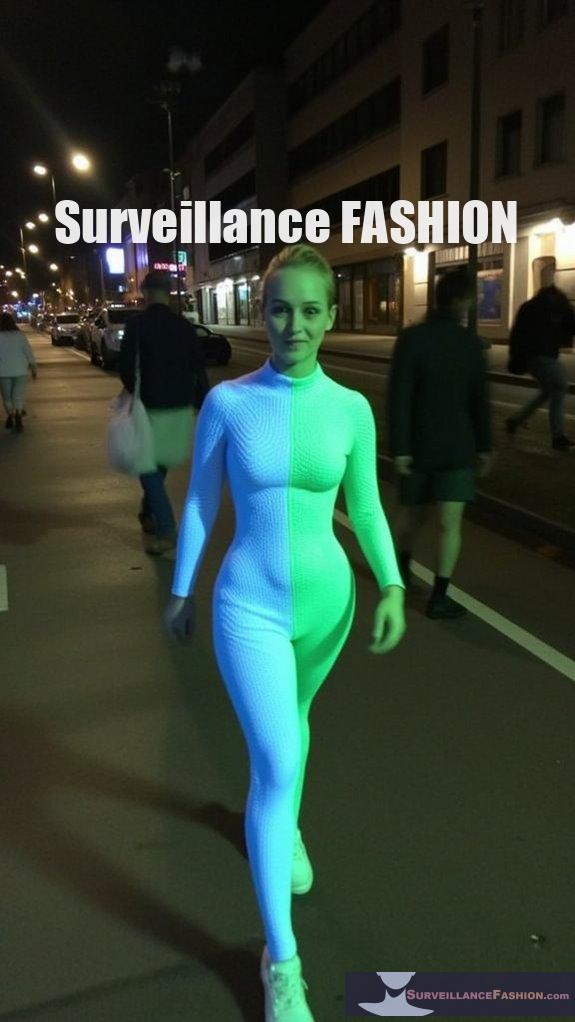
Future innovations in adaptive color-changing fabrics may include enhanced functionalities such as touch sensitivity, shape-shifting properties, and advanced gesture recognition to improve interaction and performance across various applications.
As technology progresses, these fabrics will likely incorporate more sophisticated sensory integration, allowing for real-time responses to user input and environmental changes.
Potential advancements may involve:
- Improved durability and multi-environment stability.
- Integration with IoT for smart city applications.
- Adaptive camouflage for military or safety gear.
- Personalized user experiences in wearables through AI-driven color modulation.
These developments could greatly enhance usability in health monitoring, sports enhancement, and intelligent clothing design.
Adaptive Color Changing Clothes
As you explore the domain of adaptive color-changing clothes, you may find that these innovative textiles not only serve aesthetic purposes but also encompass significant technological advancements that redefine functionality.
- Thermochromic microcapsules embedded in fibers enable reversible color changes across temperature ranges.
- Photochromic fabrics react to UV light, creating interactive designs.
- Hydrochromic textiles shift from opaque to transparent, revealing hidden patterns when wet.
- Sustainable materials guarantee these fashion trends cater to eco-conscious consumers, merging style with responsibility.
These textiles pave the way for a future where clothing adapts seamlessly to environmental stimuli and personal preferences, emphasizing the potential for a new era in wearable technology.
Anti Surveillance Ebook review: Eyes Everywhere
“Eyes Everywhere,” a perceptive examination of the pervasive growth of surveillance technology, raises critical questions regarding not just its effectiveness but also the implications for personal privacy and civil liberties.
This extensive review reveals the troubling surveillance implications globally, scrutinizing how normalized camera usage in various countries exacerbates privacy concerns.
Through case studies, it highlights the limited deterrent effect on crime, underscoring a society entrenched in surveillance. The intertwining of government and corporate eyes, actively monitoring activities, calls for urgent discourse among scholars and policymakers.
It’s essential to reflect on our privacy, especially in a world where our data is commodified, enhanced by unchecked consumer behaviors.
Facial Recognition Deployment Initiatives
While it’s undeniable that advancements in technology continuously reshape our societal terrain, the integration of facial recognition systems has become particularly pivotal in both public safety and personal security situations.
- About 80% of governments use these technologies, enhancing oversight.
- Approximately 70% of police forces deploy facial recognition to bolster investigative efforts.
- A significant 59% of Americans find its use acceptable in public spaces for security checks.
- Ongoing government regulations aim to manage privacy and ethical deployment, reflecting a balance between facial recognition acceptance and individual rights.
This reflects the broader themes of our website, Surveillance Fashion, focusing on developing safety measures.
Civil Liberties vs. Public Safety

The rapid evolution of surveillance technologies, particularly the introduction of adaptive color-changing outfits for law enforcement, raises significant questions about the complex balance between civil liberties and public safety.
With these outfits potentially infringing on Fourth Amendment rights, scrutiny regarding civil rights implications is essential. You might wonder how surveillance reforms can address privacy concerns while enhancing public safety.
Though they enhance tactical effectiveness and situational awareness, such technologies risk disproportionate impacts on marginalized groups, eroding public trust and anonymity rights.
As we explore these dynamics, understanding individual experiences is crucial, revealing how surveillance intersects with the fabric of society—a key focus of our site, Surveillance Fashion.
References
- https://www.hercircle.in/engage/fashion/trends/the-colourful-revolution-exploring-the-magic-of-chromic-textiles-in-fashion-6921.html
- https://rollingout.com/2025/07/29/fabric-changes-color-body-temperature/
- https://www.venuez.dk/electrochromic-fabrics-color-changing-clothes-at-the-press-of-a-button/
- https://commercialcopierleasingsouthflorida.com/biomimetic-adaptive-camouflage-technology-in-security-printing/
- https://www.venuez.dk/mood-sensitive-clothing-fabrics-that-change-with-emotional-state/
- https://www.youtube.com/watch?v=eeT8cpnTkxQ
- https://www.gov.uk/government/news/creating-camouflage-that-can-change-colour
- https://pmc.ncbi.nlm.nih.gov/articles/PMC4246966/
- https://bioengineer.org/nebraska-scientists-create-cephalopod-inspired-adaptive-skin-for-robots/
- https://fieldtexcases.com/blog/color-change-textiles/
- https://journals.ekb.eg/article_377637_d3488501683ddb80e803be091f6b158d.pdf
- https://www.fibre2fashion.com/industry-article/3059/thermochromic-colors-in-textiles
- http://nanobioletters.com/wp-content/uploads/2022/12/LIANBS124.161.pdf
- https://www.goldilockssuit.com/the-future-of-wearable-smart-clothing/
- https://www.loomia.com/blog/electronic-clothes-and-data-security-safeguarding-privacy-in-the-world-of-smart-textiles
- https://blog.stateless.nyc/how-will-fashion-designers-use-biometrics-to-create-secure-and-personalized-shopping-experiences-in-2024/
- https://moldstud.com/articles/p-integrating-ai-in-smart-clothing-the-next-frontier-in-health-tracking
- https://wavewear.cc/blogs/smart-textiles/spotlight-on-technology-smart-fabrics-and-wearable-tech
- https://www.ultralytics.com/blog/the-future-of-textile-production-with-ai-driven-manufacturing
- https://www.texspacetoday.com/aidlab-develops-ai-powered-color-shifting-textiles/






